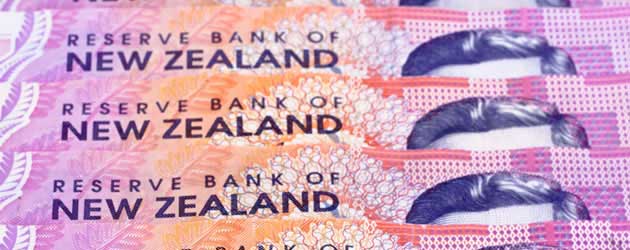 Having struggled against negative sentiment after global oil prices crashed, the Pound has had little help from economic data when it comes to initiating a rebound. The New Zealand Dollar is generally trending slightly lower on Tuesday as a result of continued anxieties regarding the slow pace of global economic growth, but stimulus measures from the People’s Bank of China have prevented any huge declination.
Having struggled against negative sentiment after global oil prices crashed, the Pound has had little help from economic data when it comes to initiating a rebound. The New Zealand Dollar is generally trending slightly lower on Tuesday as a result of continued anxieties regarding the slow pace of global economic growth, but stimulus measures from the People’s Bank of China have prevented any huge declination.
The Pound Sterling to New Zealand Dollar exchange rate is currently trending in the region of 2.0286.
Sterling has softened considerably over the past few days after global oil prices tumbled to a 4-year low. Ben Sharples, writing for Bloomberg, stated; ‘Oil futures have collapsed into bear markets as shale supplies boost U.S. output to the highest level in almost 30 years amid signs of weakening global demand. The biggest producers in the Organization of Petroleum Exporting Countries are responding by cutting prices, sparking speculation that they will compete for market share rather than reduce supply’.
Another contributing factor in the Pound’s downtrend has been speculation that there will be a delay to the highly anticipated UK benchmark rate revision. The International Monetary Fund reported that global economic growth had slowed considerably and may never recover to pre-crisis levels. This, in turn, has caused economists to pare their bets on central bank rate revisions.
Monday saw the New Zealand Dollar firm up against many of its currency rivals after Chinese data printed impressively. Both Chinese imports and exports eclipsed the median market forecasts and advanced beyond expectations. In a market driven by risk aversion strategies, the Chinese data helped to alleviate some of the global growth concerns.
The Pound Sterling to New Zealand Dollar exchange rate has fallen to a low today of 2.0286.
Tuesday’s British data has printed particularly negatively, exacerbating Sterling’s downtrend. The Consumer Price Index was forecast to drop a little from 1.5% to 1.4%, but the actual data showed a dive to 1.2%. Also, the Core Consumer Price Index declined below the median market forecast of a dip from 1.9% to 1.8%, with the actual result falling to 1.5%.
Given that the Bank of England have targeted inflation as the key hurdle preventing the tightening of monetary policy, this data will only fuel negative speculation of a delay to a benchmark rate revision.
Despite a slight dip in New Zealand’s Non Resident Bond Holdings, the ‘Kiwi’ (NZD) has held its position against many of its currency competitors. This is as a result of fresh stimulus measures initiated by the People’s Bank of China. China’s central bank cut the interest rate it pays lenders for 14-day repurchase agreements for the second time in a month.
‘This is another step to cutting overall financing costs,’ Zhou Hao, a Shanghai-based economist at Australia & New Zealand Banking Group Ltd., said in a phone interview. ‘The PBOC wants to use this to guide commercial bank lending rates lower as they are still relatively high on a historical basis.’
Forecast for the Pound to New Zealand Dollar Exchange Rate
With British inflation moving away from the 2.0% target outlined by the Bank of England, it is highly likely that the Pound will continue trending lower on Wednesday. Average Weekly Earnings will be of interest to Sterling traders to see how wages and inflation correlate.
A lack of domestic data pertaining to New Zealand until late on Wednesday evening could cause the ‘Kiwi’ to depreciate a little.
The Pound Sterling to New Zealand Dollar exchange rate has reached a high today of 2.0461.
New Zealand Dollar (NZD) Exchange Rates
[table width=”100%” colwidth=”50|50|50|50|50″ colalign=”left|left|left|left|left”]
Currency, ,Currency,Rate ,
New Zealand Dollar, ,US Dollar,0.7862,
,US Dollar,0.7862,
New Zealand Dollar, ,Euro,0.6211,
,Euro,0.6211,
New Zealand Dollar, ,Pound,0.4925,
,Pound,0.4925,
New Zealand Dollar, ,Australian Dollar,0.8995,
,Australian Dollar,0.8995,
US Dollar, ,New Zealand Dollar,1.2718,
,New Zealand Dollar,1.2718,
Euro, ,New Zealand Dollar,1.6102,
,New Zealand Dollar,1.6102,
Pound Sterling, ,New Zealand Dollar, 2.0308,
,New Zealand Dollar, 2.0308,
Australian Dollar, ,New Zealand Dollar,1.1119,
,New Zealand Dollar,1.1119,
[/table]

